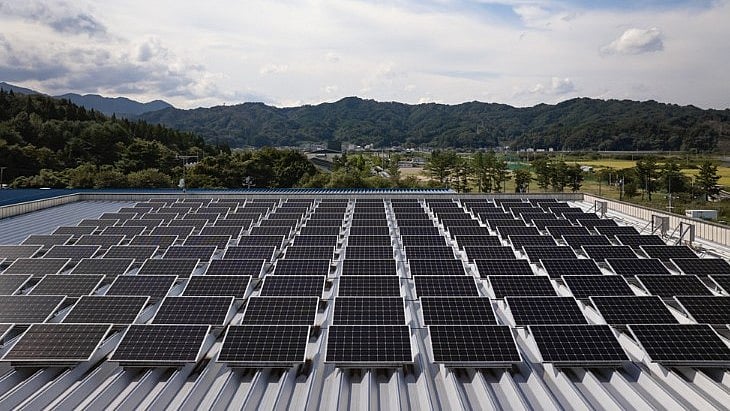
Apple has surpassed a 60 percent reduction in its global greenhouse gas emissions, part of its Apple 2030 goal to become carbon neutral across its entire footprint.
Credit: Apple
In July 2020, Apple set a very ambitious target of turning carbon neutral across its entire business, manufacturing supply chain, and product life cycle by 2030.
Unlike other companies, Apple has put a lot of effort on the ground to achieve the goal. With each passing year, it has reduced the green house gas emissions from its offices and supply partner factories worldwide.
All Apple's corporate offices globally, including in India, run on renewable energy.
Ahead of World Earth Day (April 22), the Cupertino-based company has revealed that the effort to use renewable electricity and designing products with more recycled materials, it avoided an estimated 41 million metric tons of greenhouse gas emissions. This is 60 per cent less compared to 2015's annual baseline emission levels.
As of now, 17.8 gigawatts of renewable electricity is online in Apple’s global supply chain, and this has helped Apple reduce over 17 per cent more greenhouse gas emissions than the previous year.
Further, 26 of Apple’s direct semiconductor suppliers have pledged to reduce at least 90 per cent of F-GHGs from their facilities with Apple-related production by 2030, the company noted.
Also, the company uses 99 per cent recycled rare earth elements in all magnets and 99 per cent recycled cobalt in all Apple-designed batteries.
“We’re incredibly proud of the progress we’re making toward Apple 2030, which touches every part of our business. Today, we’re using more clean energy and recycled materials to make our products than ever before, we’re preserving water and preventing waste around the world, and we’re investing big in nature. As we get closer to 2030, the work gets even harder — and we’re meeting the challenge with innovation, collaboration, and urgency,” said Lisa Jackson, Apple’s vice president of Environment, Policy, and Social Initiatives.
In India too, Apple is expanding efforts to reduce emission levels in its offices, but also give back to the society.
As part of Power for Impact initiative, Apple set-up solar electricity infrastructure in under-served remote villages to run schools and medical clinics with access to clean, renewable solar energy.
Further, Apple has set a goal to replenish 100 per cent of the company's corporate freshwater withdrawals in high-stress locations by 2030. This has already borne fruit, as Apple has been offering 40 million gallons of drinking water in partnership with the Uptime Catalyst Facility in India over the past two years. This has helped Apple meet its 100 per cent water replenishment target for its corporate operations in India in 2023.
In Bengaluru last year, Apple in collaboration with Frank Water and local partners set-up drinking water project in the city outskirts Anekal. Now, it plans to expand the programme to Chennai.
Get the latest news on new launches, gadget reviews, apps, cybersecurity, and more on personal technology only on DH Tech.
